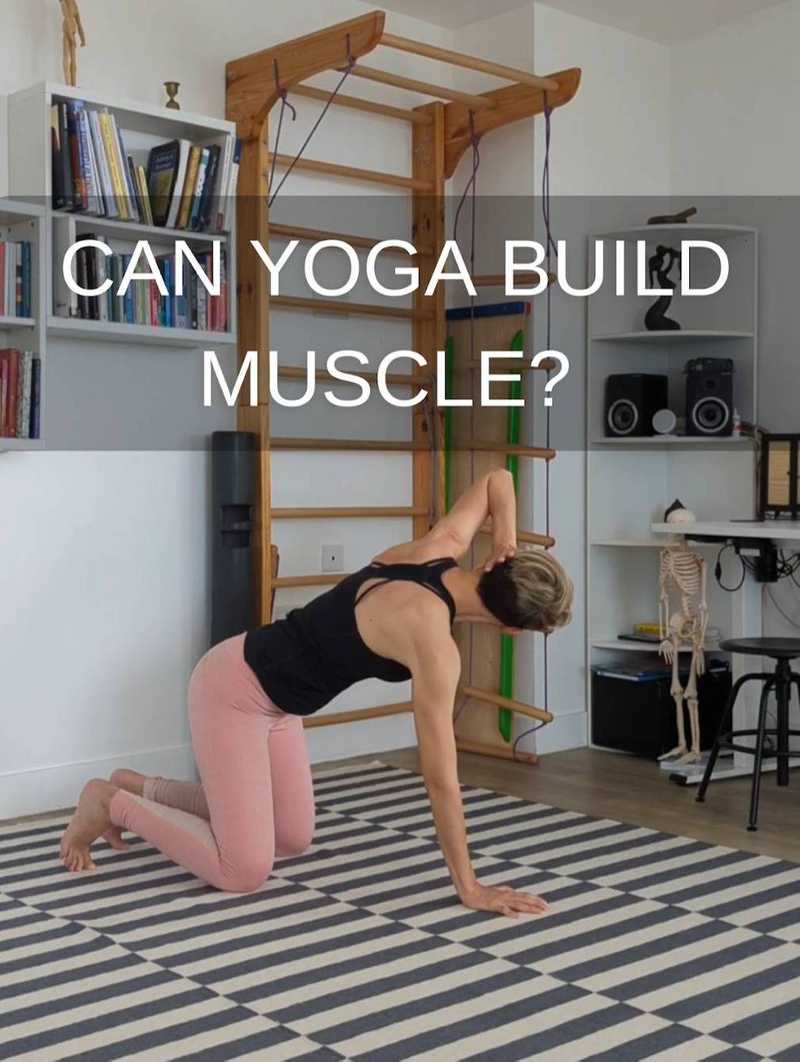The Truth About Yoga & Muscle: A Sports Scientist's Perspective
07 July 2025
Understanding muscle fibers and why yoga alone isn't enough for building strength

As both a sports scientist and long-time yoga practitioner, I often get asked if yoga alone is enough for building strength.
The short answer is yes and no.
Yoga is not just about stretching and flexibility. Oh, yes, you do use muscles, as anyone who has ever done chaturangas, cranes and other arm balances will know very well. But, yoga can build mostly one type of muscle fibers and it’s not very effective for gaining muscle mass.
Now, let me explain. The muscles that move and support our bodies have two types of muscle fibers:
- Slow-twitch, aka your endurance muscles – They create little force but can work for a long time without getting tired
- Fast-twitch aka your power and speed muscles – They contract quickly and produce more force but tire more quickly
Most of our muscles have both types of fibers weaved in, more or less, depending on genetics and the type of training you do.
Yoga involves mostly isometric (muscles stay the same length) and eccentric contractions (muscles lengthen while firing) and holding positions. We use muscles to keep the body together, resist the gravity and hold the weight of the body at more or less challenging angles. And this particular input builds endurance fibers - so you get better at staying in those positions for longer.
But, there is usually not enough input to build the power and strength fibers. Maybe a bit, in the power-style yoga sequences that include some jumping, dynamic transitions and explosive movements. But, even then, without adding weights and resistance the gains will not be enough for you to visibly gain muscle mass.
Which fibers are better?
Well, you want to have both. Slow-twitch fibers are better at using oxygen and nutrients and have higher insulin sensitivity. But we need the power and speed muscles, especially as we age, to prevent falls, keep independence and maintain strong bones. Also, guess which of the two types we lose the most with ageing? The power ones.
Progressive Overload is Key
To build muscle, we need progressive overload. In other words, we need to challenge that muscle to gradually handle more and more loading by getting bigger and stronger.
The endurance fibers build more strength as we gradually increase time under tension, let’s say by holding yoga poses longer. So, that one is fine. But the power and speed muscles grow by being challenged to produce a more powerful muscle contraction in a shorter time. Let’s be honest, yoga is not going to cut it there.
But, yoga works beautifully when combined with some resistance and weight training 2-3 x a week.
This frequency:
- Is strong enough stimulus for muscle growth
- Leaves you enough time for recovery between sessions
- Can be squeezed into most people’s schedules
- Pairs well with the daily feel-good yoga
The Pushing vs Pulling Problem
Another tricky bit about yoga asanas, as a fixed system of positions, is that we have a lot of pushing movements but hardly any pulling.
Why does that matter?
To keep our shoulders healthy, we need a good balance of pulling and pushing. But in yoga, we have downward dogs, planks, chaturangas (again) and many other pushing movements but no pulling at all.
This creates a lot of stress on the muscles at the front of the shoulder, while weakening the back and the small muscles inside that rotate and stabilise the shoulder joint. So, adding resistance training you want to include plenty of pulling movements to complement your yoga practice.
Here is a Youtube playlist with some pulling exercises to get you started: Strength Training for Yogis - Pulling Movements
In a Nutshell
Yoga does build muscle, but it’s the endurance fibers we get, not the power ones. For extra power and strength, especially in midlife and onwards, we need to add resistance/weights training minimum 2 x a week to build and maintain muscle mass, bone density and functional strength as we age.
When designing your resistance/strength training, make sure to include some pulling movements, as we are missing those in yoga. We need both pushing and pulling for shoulder stability and long-term health.